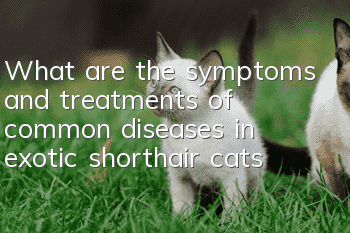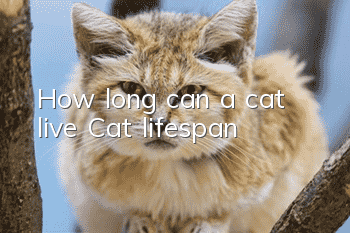What are the symptoms and treatments of common diseases in exotic shorthair cats?

Exotic shorthair cats are one of the clingiest cats, and their appearance is cute, so they are loved by many cat lovers. However, their characteristic facial structure also makes them have mixed feelings. The good news is that they look very cute and lovable; the bad news is that this facial structure makes them more susceptible to certain diseases, such as conjunctivitis, keratitis and some respiratory diseases. etc.
1. Conjunctivitis
Conjunctivitis is a common disease. Due to the abnormally short facial structure, the eyes are more protruding, so they are more susceptible to infection. If not cleaned regularly, conjunctivitis may occur.
Cause: Caused by bacterial and viral infections, trauma, allergies, irritation from drugs or plants, garbage, dust, etc.
Symptoms: Eye droppings, constant blinking, tears, and exposure of the nictitating membrane. In severe cases, it can also cause swelling of the conjunctiva. There are symptoms of feline viral rhinotracheitis, feline cold bacterial infection and other diseases.
Treatment: If the disease causing conjunctivitis is serious, treatment must be given first. Remove the dirt around the eyes, prescribe eye drops from the hospital, and give the cat eye drops according to the doctor's instructions.
2. Keratitis
Because the cornea is in direct contact with the outside world, there are more chances of infection, especially for exotic short-haired cats.
Cause: Incorrect eyelashes, trauma, entropion or conjunctivitis can all lead to corneal inflammation.
Symptoms: Eye pain, watery eyes, cloudy and white cornea (but it is different from cataracts).
Treatment: The general approach is to use a warm towel to lightly apply on the cat's eyelids. This can promote blood circulation, and then treat it with antibiotic ointment prescribed by a pet physician.
Cats with vitamin A deficiency and malnutrition often develop keratomalacia.
3. Epiphora
Although heterosexuals are prone to tears, what we are talking about here are abnormal tears. Pay attention to the normal condition of your eyes. If you suddenly shed more tears than usual, you should pay attention.
Cause: excessive tear secretion or blocked tear ducts.
Symptoms: The hair under the cat’s eyes is dyed dark brown.
Treatment: Never use eye ointments or eye drops on cats casually. Be sure to find a professional doctor to prescribe eye drops.
Exotics are prone to this eye disease, which may be related to eye allergies or respiratory infections. Owners should carefully check their cats’ eyes during their first medical examination.
4. Cataract
Speaking ofThis disease must be mentioned in elderly cats. If your cat is older and suffers from diabetes, the chance of it getting cataracts is very high.
Cause: The crystalline lens becomes white and opaque due to congenital or acquired reasons.
Symptoms: Cat’s eyes become white and opaque.
Treatment: The common treatment for cataracts is surgery to remove the opaque part and restore the cat’s vision. Only experienced doctors can perform this kind of surgery. If the surgery is not possible or fails, the cat's vision will gradually lose.
The appearance of white mist in the eyes does not mean cataracts. The spots on the lens surface of older cats are not necessarily cataracts. They may only be caused by changes in the refractive index of the lens in old age, and do not affect vision. .
In addition to eye diseases, cats with short noses are more likely to suffer from some respiratory diseases due to their shorter noses. In summer, you should also be careful not to let cats do too strenuous exercise. If it is hot outside, don’t let them They go out to avoid heatstroke and danger.
- How to train a Maine Coon cat to use the toilet
- How to stop cats from eating plants?
- Can cats spray toilet water on them?
- Can cats know their way home? How do cats find their way home?
- Why is the cat snoring?
- It’s OK to become addicted to petting cats. Parasites in cats are extremely harmful to humans and must be expelled on time!
- What does cat triplet mean?
- High temperature warning, how to properly cool down pets?
- Correct posture for holding a cat. Do you know the correct posture for holding a cat?
- Correctly understand the seriousness of feline infectious peritonitis



